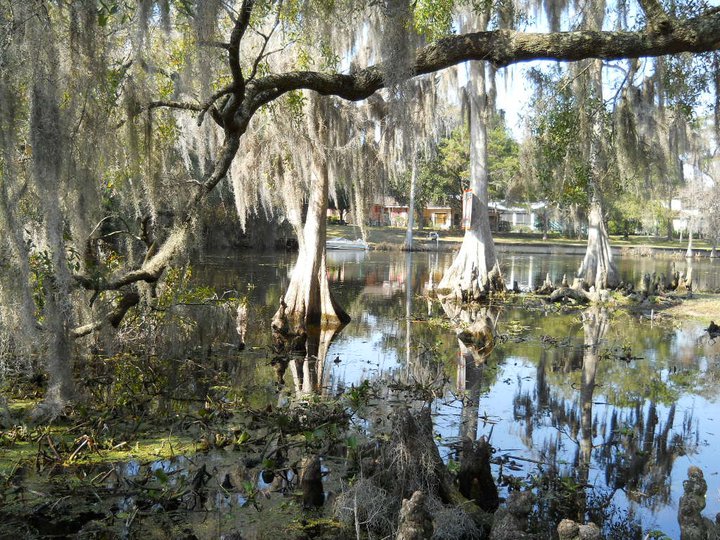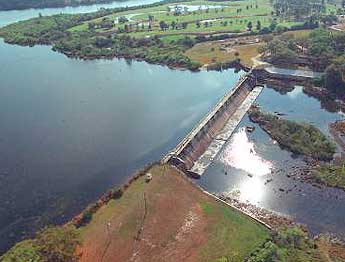|

ePublications & eNews
from our agency are
always associated with
an email ending in:
@plancom.org
|
Hillsborough River
Interlocal Planning
Board Meetings:
Tuesday, May 19 *
- Joint meeting with
TAC to be held at the
Temple Terrace
Public Works
Conference Room,
11210 N 53rd Street,
at 1:30 pm
Monday, August 24
Monday, November 23
Unless otherwise noted,
all River Board meetings
will be held at 9:30 a.m. at
Temple Terrace City Hall
(City Council Conference Room)
11250 N 56th St
Temple Terrace, FL 33617
Hillsborough River
Technical Advisory
Council (TAC)
Upcoming Meetings:
Tuesday, June 16
July (No Meeting)
Tuesday, August 18
Tuesday, September 15
Tuesday, October 20
Tuesday, November 17
December (No Meeting)
All TAC meetings will be
held at 1:30 p.m. at the
Southwest Florida Water
Management District's
Tampa Service Center
(Laurel Oaks Room)
7601 US Hwy 301
Tampa, FL 33637
For more information on
the Hillsborough River
Interlocal Planning Board
& Technical Advisory
Council, please call
813.272.5940 or visit:
planhillsborough.org
|
|
River Facts
|
 The Hillsborough River is home to many species, and several large bird rookeries exist. When local students reach sixth grade in Hillsborough County, they take a visit to the river for one to three days to learn about the ecosystem, watershed, and native Florida animals at a place called Nature's Classroom. 
The Hillsborough River dam (originally built in 1895 and since rebuilt) at Rowlett Park creates a lake covering 1,300 acres and containing 1.6 billion US gallons of water, providing for the supply of water for the City of Tampa. The Hillsborough River was immortalized in 1973 by author Gloria Jahoda in her book River of the Golden Ibis. With the construction of the dam in 1945, the portion of the River above the dam to approximately Fletcher Avenue is where the City of Tampa is permitted to withdraw water to supply to its citizens and those in Hillsborough County. Tampa Bay Water is also permitted to withdraw water from the River during "high flow" times and under specific conditions. The Southwest Florida Water Management District, the agency required by Florida law to protect and manage the waters in the state, authorizes the permits. With the establishment of the minimum flow of the upper and middle river by the Southwest Florida Water Management District in 2007 and its supporting Recovery Strategy, the City of Tampa and the District in partnership are implementing measures and projects to achieve the required flow in the lower river, while preserving the pristine nature of the middle and upper rivers. The river above the dam to roughly the 56th Street bridge passes through the neighborhood of Temple Crest. 
The river above the 56th Street bridge passes through the City of Temple Terrace and it is one of the many scenic portions of the river.The has a river cleanup of its river portion twice a year. Tampa's annual River clean up has grown into The Hillsborough River & Coastal Cleanup. It is not your typical litter removal event. As part of this effort, volunteers collect data to identify the number and type of littered items, the overall tonnage removed from each site and the amount of recyclable materials diverted.This information is used to determine future needs, projects in the area and to create an awareness of these needs within the community. As part of the International Coastal Cleanup, data is shared with the Ocean Conservancy, Keep America Beautiful, as well as local officials to help provide a local and global perspective.  Last year, over 60,500 pounds of litter and debris was removed from over 75 locations throughout Hillsborough County. More than 4,000 volunteers participated in the cleanup along the Hillsborough River, Alafia River, and other waterways.  |
April is Water Conservation Month
| 
Celebrate water conservation month in Hillsborough County. April is typically the driest month of the year in Florida. With the rainy season starting in June, water demand is at its highest as residents put in new plantings for spring and water their lawns to make the grass green. To help reduce water use, the county offers Low Volume Irrigation Mini-Grants for eligible community associations. Information about these programs can be found at :
hillsboroughcounty.org/conserveh2o Hillsborough County water customers have done their part. In 1989, when the County began a formal water conservation program, the average water use per person was 146 gallons a day. Today, that number stands at 94 gallons per person, per day. Totaled up, the savings add up to 26 million gallons of water a day, or approximately 10 billion gallons a year. 
|
|
Battle over invasive aquatic weeds continues in the Hillsborough River
|
A major weed species in more than 50 countries.
The floating water-hyacinth was introduced into Florida in the 1880s
|
The River Board's Technical Advisory Council has spent the last few months investigating the incidence of invasive aquatic weed growth in the Hillsborough River. With presentations from Hillsborough County Public works, who contracts with the state to perform aquatic weed control, and the Florida Fish and Wildlife Conservation Commission (FWC), which takes the lead in aquatic weed control in public waterways, much has been learned.
Aquatic weed growth varies throughout the year due to temperature and nutrient availability. Rainfall can affect the latter. Weeds can also collect in "back water" areas such as Lettuce Lake Park, due to the prevailing winds, shallow warm waters, and dead end areas. Chemical control is the primary technique to address problem areas. Mechanical removal is cost prohibitive. Additional information and contacts to report problem areas on the river, can be found on the FWC website.
| |

|
|
Inaugural RiverFest coming May 2 & 3!
| On Saturday, May 2nd and 3rd, 2015, RiverFest 2015 will be held along the Tampa Riverwalk in Tampa Heights and Downtown Tampa. This free, annual event presented by Friends of the Riverwalk in conjunction with the City of Tampa, will attract people to the Riverwalk and highlight Tampa's cultural institutions, local music and restaurants. The event serves as a fundraising program for Friends of the Riverwalk (501c3 non-profit).


|
|
River Board elects new officers
|
At the  February quarterly meeting, the River Board elected new officers. Tampa City Councilwoman Lisa Montelione was elected Chair. Temple Terrace City Council member  and Vice Mayor Grant Rimbey was elected Vice Chair. River Board officers serve two year terms.
Congratulations to our new officers!
|
|
Riverwalk celebrates new Kennedy Plaza

The current, and several previous Mayors of Tampa, attended the grand opening of the Kennedy Boulevard Plaza segment of the Tampa Riverwalk on March 27 at Curtis Hixon Waterfront Park. "The Riverwalk has been in the making for 40 years, and it has taken the efforts of six mayors to be completed. Its construction represents the importance of the Hillsborough River as our best natural asset," said Mayor Bob Buckhorn." Spanning 1460 feet of water on the eastern side of the Hillsborough River, running underneath the Kennedy Boulevard Bridge, the segment links MacDill Park to Curtis Hixon Waterfront Park, and provides pedestrians and cyclists 1.8 miles of continuous, completed Riverwalk.
The total project cost for the Kennedy segment is $9.2 million, which was partially paid for by a Transportation Investment Generating Economic Recovery (TIGER) IV grant awarded to the City of Tampa in June 2012 by the U.S. Department of Transportation. The TIGER grant will also go toward constructing the Doyle Carlton Segment of the Tampa Riverwalk as well as the Tampa Hillsborough Expressway Authority Selmon Greenway. The City of Tampa recently received the permit by the U.S. Army Corps of Engineers allowing construction to begin on the Doyle Carlton Segment of the Tampa Riverwalk in Summer 2015 with completion in Summer 2016.
| |

|
|
Straz Center has ambitious makeover plans
|
|
| | Preliminary Rendering by Architect Westlake Reed Leskosky |
By CHRISTOPHER O'DONNELL
Tribune staff Published March 9, 2015
TAMPA - The Straz Center wants to be the place to go, and not just to take in a show. With the city's Riverwalk expected to increase foot traffic past the venue, Straz Center officials on Monday unveiled plans to make the performing arts center a place for passersby to hang out or have a meal.
Under the plan, the area between the venue and the Hillsborough River would be transformed with a new entry plaza, a riverfront restaurant and café with terrace seating, retail stores, an amphitheater and an events center for weddings and parties. A new underground parking garage with spaces for 100 cars is planned for the south side of the Straz. Grandest of all perhaps, would be the addition of a small over-the-water pavilion housing a tall avant-garde sculpture intended to serve as a visual cue of the venue's presence downtown.
The overhaul of the west and south sides of the Straz Center is intended to dovetail with the realignment of Cass and Tyler streets, which will be straightened to accommodate Residences on the Riverwalk, a 36-story high-rise tower expected to begin construction later this year.
Straz leaders said revamping the venue will give the city's rejuvenated downtown another attraction and provide needed amenities along the Riverwalk. City leaders are scheduled to officially open the latest stretch of the signature waterfront development on March 27. "We're excited to be a partner with the city in the city's plan for the development of the Riverwalk and programming the Riverwalk," said Judith Lisi, Straz president and CEO. "We're looking at the riverfront as a new venue and how to program that."
The Straz project is also likely to tackle long-term needs of the 28-year-old center, including refurbishments of the lobby area for Morsani Hall, dressing room renovations and an expansion of the Patel Conservatory, the performing arts school located inside the arts complex. The underground parking lot will help ease the strain on the nearby William F. Poe Garage. "It's our challenge to keep (the Straz) state of the art and keep it where it needs to go," Lisi said.
The riverside restaurant will be a new home for Maestro's, which has operated from a site above the Jaeb Theatre. It will seat up to 200 diners. The master plan will be produced by Westlake Reed Leskosky, a national firm that also worked on the Denver Center for the Performing Arts and the Playhouse Square in Cleveland. Paul Westlake, managing principal of Westlake Reed Leskosky, said he wants to make the Straz into a riverfront icon. "There will be places to hang out, places for outdoor performances," he said. "We want the arrival to be as exciting as the event itself."
The $245,000 cost for the master plan will come from a donation from the Frank E. Duckwall Foundation. No costs have yet been estimated for construction, which would likely be done in phases, said Lisi. Some help will come from the developers of Residences on the Riverwalk, who agreed to contribute toward the remake of the Straz entry plaza."There will be a lot of zeroes," Lisi said of the overall price tag.
Other challenges await the Straz, too. Since it is over the water, the pavilion would have to meet strict permitting regulations and be approved by the Southwest Florida Water Management District. Westlake Reed Leskosky officials met with hydrologists Monday to discuss possible impacts on Hillsborough River. The project is also somewhat hamstrung by the proximity of Cass Street Bridge and adjacent railroad bridge that lies low to the river.
The Straz Center and its 9-acre site is owned by the City of Tampa and rented for a nominal cost to the Tampa Bay Performing Arts Center Inc. Last year, the city also paid roughly $547,000 for operating and capital costs for the center and $274,000 to insure the property. The 335,000 square-foot facility boasts five performance halls, employs 110 full-time workers and draws an audience of about 600,000 per year.
The master plan is expected to be complete by May and will include renderings of the new facilities. Lisi said that between 70 and 80 percent of the cost will likely come from the private sector but that the center also will look to get assistance from city, county and state funds. A private fundraising campaign will begin immediately. "A great design is critical to a successful capital campaign," Lisi said. "If the design doesn't excite and inspire people, they'll go to the next thing that inspires or excites them."

|
|
|
Protect the environment with these 10 tips for homeowners
| 
STORMWATER RUNOFF: MINIMIZING IMPACTS
by
MARINA D'ABREAU, Ed.D.
Water is the essence of life. In an average year, Florida receives over 50 inches of rain water, especially during the summer months. Yet, as Florida's population grows, the demand for this water continues to strain our natural resources. This is, in part, due to a loss of natural green space and an increase of impervious surfaces like concrete and asphalt, which prevent rain water from filtering back to our groundwater systems. Storm water runoff is any water flowing off of roofs, driveways, and yards that carries fertilizers, pesticides, oils and other chemicals, contributing to pollution in our surface waterways. This is called non-point source pollution, and it can be controlled. Reducing runoff from your property is simple. Follow these behaviors to make a difference, one step at a time... - Install and maintain a Florida-friendly landscape that absorbs runoff and allows it to filter back into the soil.
- Choose drought-tolerant plants that don't need a lot of irrigation.
- Install practical areas of drought-tolerant turf for play, entertainment, pets, etc. Use ground covers as turf alternatives in low traffic areas of the landscape.
- Maintain 3" of mulch in plant beds to reduce erosion and retain soil moisture, minimizing watering needs.
- Follow local watering restrictions, and water only as needed. Many Florida-friendly plants, once established, can survive with little supplemental irrigation.
- Water in the early morning hours to avoid water loss from wind and evaporation.
- Install low-volume irrigation in plant beds to minimize overspray and excess watering of plants.
- Install a functioning rain shut-off device on all irrigation systems to avoid unnecessary watering.
- Use a rain gauge to track rainfall and determine if supplemental watering (on your assigned day) is necessary.
- Use rain barrels or cisterns to collect rain water for landscape irrigation. Rain barrels capture storm water runoff, reduce erosion around the foundation of the house, and provide a free source of water for your plants.
UF/IFAS Extension in Hillsborough County is an educational service provided by both the University of Florida and Hillsborough County to provide information to the public through workshops, publications and mass media.

|
|
In accordance with Title VI of the Civil Rights Act of 1964 and other nondiscrimination laws, public participation is solicited without regard to race, color, national origin, age, sex, religion, disability or family status. |
|
|
|